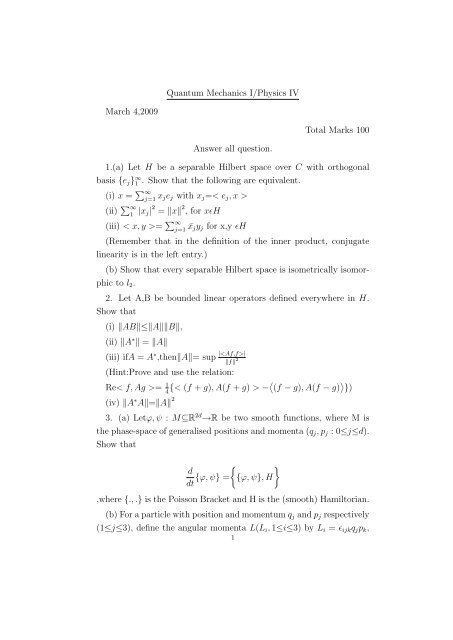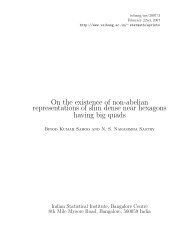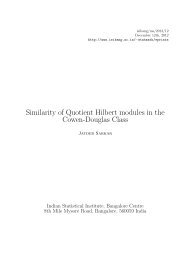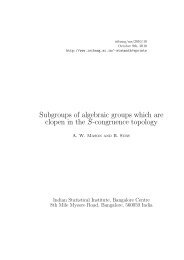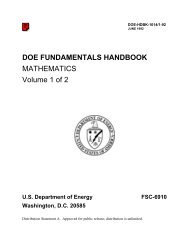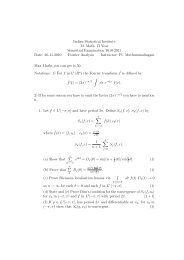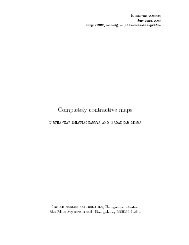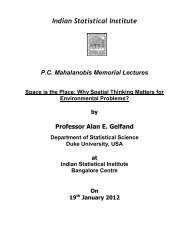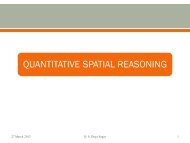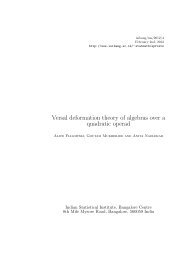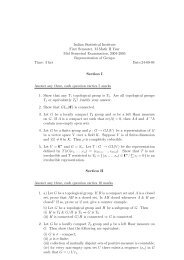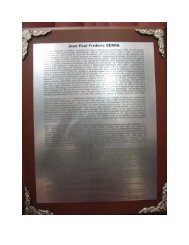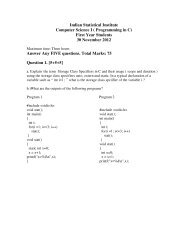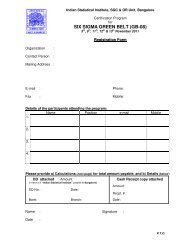Physics IV 2008-09
Physics IV 2008-09
Physics IV 2008-09
Create successful ePaper yourself
Turn your PDF publications into a flip-book with our unique Google optimized e-Paper software.
Quantum Mechanics I/<strong>Physics</strong> <strong>IV</strong><br />
March 4,20<strong>09</strong><br />
Total Marks 100<br />
Answer all question.<br />
1.(a) Let H be a separable Hilbert space over C with orthogonal<br />
basis {e j } ∞ 1 . Show that the following are equivalent.<br />
(i) x = ∑ ∞<br />
j=1 x je j with x j =< e j , x ><br />
(ii) ∑ ∞<br />
1 |x j| 2 = ‖x‖ 2 , for xɛH<br />
(iii) < x, y >= ∑ ∞<br />
j=1 ¯x jy j for x,y ɛH<br />
(Remember that in the definition of the inner product, conjugate<br />
linearity is in the left entry.)<br />
(b) Show that every separable Hilbert space is isometrically isomorphic<br />
to l 2 .<br />
2. Let A,B be bounded linear operators defined everywhere in H.<br />
Show that<br />
(i) ‖AB‖≤‖A‖‖B‖,<br />
(ii) ‖A ∗ ‖ = ‖A‖<br />
(iii) ifA = A ∗ ,then‖A‖= sup ||<br />
‖f‖ 2<br />
(Hint:Prove and use the relation:<br />
Re< f, Ag >= 1 4 {< (f + g), A(f + g) > −〈 (f − g), A(f − g) 〉 })<br />
(iv) ‖A ∗ A‖=‖A‖ 2<br />
3. (a) Letϕ, ψ : M⊆R 2d →R be two smooth functions, where M is<br />
the phase-space of generalised positions and momenta (q j , p j : 0≤j≤d).<br />
Show that<br />
{ }<br />
d<br />
dt {ϕ, ψ} = {ϕ, ψ}, H<br />
,where {., .} is the Poisson Bracket and H is the (smooth) Hamiltorian.<br />
(b) For a particle with position and momentum q j and p j respectively<br />
(1≤j≤3), define the angular momenta L(L i , 1≤i≤3) by L i = ɛ ijk q j p k ,<br />
1
2<br />
where ɛ ijk is the elementary completely antisymmetric teuser (=0 if any<br />
two of the three indices are equal, and = + − 1 according as (ijk) is an<br />
even or odd permutation of the symbols (123)). Using the Hamilton’s<br />
equations for q and p, show that dL = {L, H} as a vector-equation.<br />
dt<br />
(c) For a particle in a central potential V (from a fixed centre of<br />
force)in 3-dimensions ,derive the equation of motion for the angular<br />
momenta.


